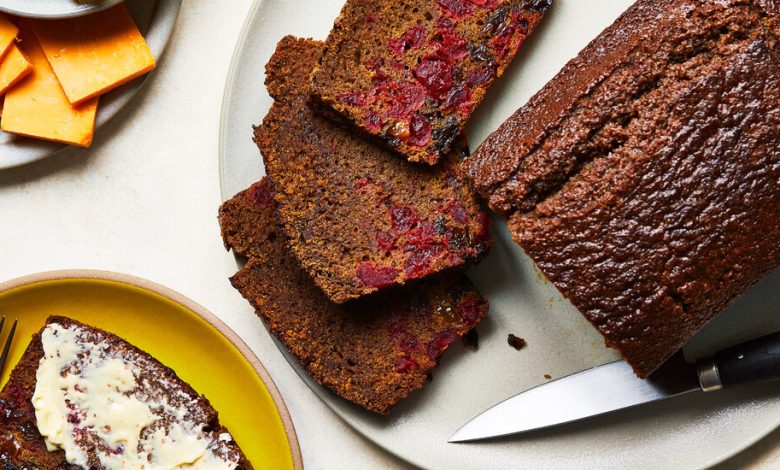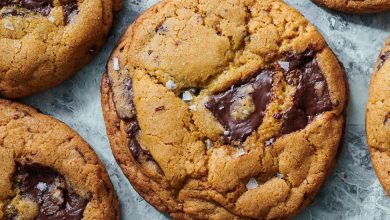An Easter Loaf Baked With Fruit, Spices and Caribbean Sun

For many Jamaicans, spice bun is a staple of Lent, the 40-day period before Easter marked by prayer, penitence and restraint, for those observing. But there’s nothing restrictive about this baked good, so named for its bold seasonings.
Recipe: Spice Bun
Colloquially referred to as “bun,” this quick bread — in the shape of either an oblong loaf or an oval bun — is spice-forward and forgiving, its big tastes easily extracted from a few easy-to-find ingredients. Molasses and stout, essential ingredients in the Caribbean pantry, moisten and color the bun’s dark, tender crumb year-round.
“Bun is one of the island’s iconic food traditions,” said Andre Fowles, the personal chef to Bruce Springsteen and his wife, Patti Scialfa, and the author of a forthcoming Jamaican cookbook.
But during the Lenten season, when it’s officially called Easter bun, it gets a fruity face lift, enhanced with added raisins and red cherries.
“Giving and sharing bun during Easter honors the religious aspect of the season,” Mr. Fowles said.
Golden Krust Caribbean Bakery & Grill, a family-run, fast-casual chain with more than 100 outposts in the United States, first started making and selling bun in 1949 as Hawthorne & Sons Bakery in St. Andrew Parish, Jamaica. Now, the company produces about 150,000 buns a year, with 90,000 of those sold during Lent alone, what Steven Clarke, vice president of marketing for the restaurant group, calls “an adrenalized injection of traffic.”
“For us, Easter is like Christmas,” said Mr. Clarke, adding the company’s factory bustles in advance of the season to meet heightened demand.
“During Easter, the culture really calls for it,” he said.
As is the case with many foods, bun’s origins aren’t tidily pinned to a specific point in Jamaica’s history. It is widely believed to have evolved from hot cross buns, speaking to centuries of English colonial rule — Jamaica gained independence in 1962 — and Britain’s hold on the sugar trade in the region.
With bun, Jamaicans took something European and made it their own, using the robust flavors — nutmeg, allspice, clove, cinnamon, ginger — that infuse many of the island’s dishes. They not only add a spiky sweetness but also reflect the Jamaica’s bombastic identity and soul. Bun is an example of adaptive and joyous baking, that Jamaicans on the island and abroad are proud to call their own.
“It does not need innovation, it is perfect as it is and needs no improvement,” said Suzanne Rousseau, who, with her sister, Michelle, wrote “Provisions: The Roots of Caribbean Cooking.” “It stands the test of time and is beloved by all Jamaicans.”
Follow New York Times Cooking on Instagram, Facebook, YouTube, TikTok and Pinterest. Get regular updates from New York Times Cooking, with recipe suggestions, cooking tips and shopping advice.




